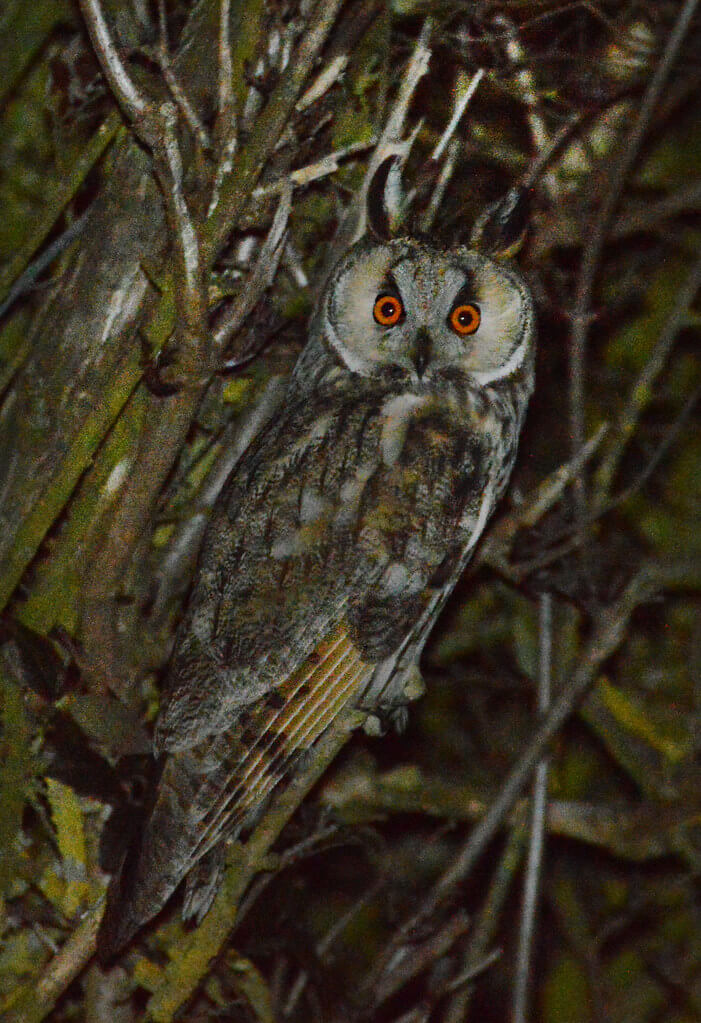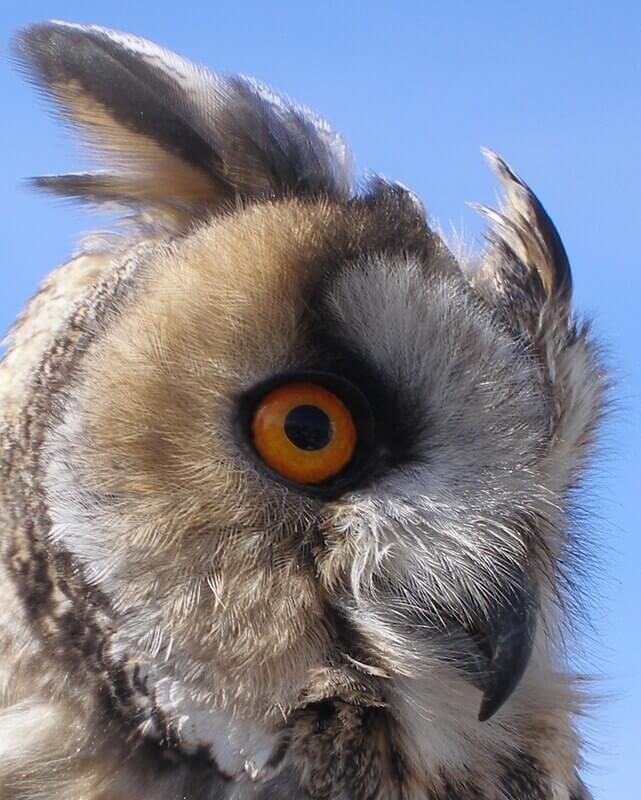5 Curious Facts about the Long-Eared Owl

The long-eared owl is a bird of prey that has quite a bewitching face, and there are several other interesting aspects about it that we’re going to tell you about today.
It can be found in most of the northern hemisphere of the planet, such as America, Europe, Russia, and even Japan.
The scientific name of this species is Asio otus. It belongs to the Strigiformes order, a group known for integrating nocturnal birds such as owls. Continue reading and discover some curious aspects about the long-eared owl.
What is the long-eared owl like?
The long-eared owl is a medium-sized bird that measures an average of 35 centimeters (14 inches) long, with a maximum wingspan of 100 centimeters (25 inches). Its plumage is dense and tends to be more crowded on the head, which makes it look square and forms two tufts that look like ears.
As for its coloration, this bird exhibits a combination of black, brown and white feathers. These form a varied pattern that somewhat resembles the bark of trees. This camouflage helps it to go unnoticed while resting on the surrounding pine trees.
This species is nocturnal and isn’t easily spotted during the day. For this reason, even though its appearance is quite unique, and it’s well-known in several parts of the world, many aspects are still quite unknown.

Little-known facts about the long-eared owl
The long-eared owl is an impressive species with interesting colorations, but there are some quite curious aspects about its biological makeup. Let’s have a look at a few of them.
1. No elongated ears
The elongated tufts on the top of the long-eared owl’s head are not ears, but long feathers that stick out somewhat. Although it may seem strange, the ear canals are hidden on each side of the skull, but the plumage is so dense that they aren’t so noticeable.
2. They pretend to be part of the trees
When a predator appears, the long-eared owl elongates its body, compresses its feathers, and stands still to pass itself off as part of the tree. While body coloration is important in these scenarios, owls also adapt their behavior to increase their survival rate.
3. They’re nomadic
Owls of this species frequently move through several parts of their natural range. These movements are short and are due to abundance or scarcity of food, so they aren’t usually considered migrations. Because of this, they’re considered to be nomadic birds that constantly search for territories suitable for their survival.
4. They can move their “ears” (ear tufts)
Although the feathers protruding from its head don’t have an auditory function, they’re necessary for the bird’s body language. In fact, these bangs have certain mobility and can change the bird’s overall appearance, changing its mood or helping it look more frightening.

5. They rarely build their own nests
It may sound weird and impossible, but short-eared owls rarely build their own nests from scratch. This is because most of them reuse nests left by other bird species, saving time and allowing them to focus on breeding. Of course, if they don’t find a suitable one, they’re quite able to make one.
As you can see, the long-eared owl is an interesting bird with many curious aspects. However, its evasive behavior and excellent camouflage make it difficult to study, so there are still many unsolved questions about its life. So, we can only hope that research will continue and that in the future we’ll discover a lot more about this beautiful species.
All cited sources were thoroughly reviewed by our team to ensure their quality, reliability, currency, and validity. The bibliography of this article was considered reliable and of academic or scientific accuracy.
- Tome, D. (2003). Nest site selection and predation driven despotic distribution of breeding long‐eared owls Asio otus. Journal of Avian Biology, 34(2), 150-154.
- Perrone Jr, M. (1981). Adaptive significance of ear tufts in owls. The Condor, 83(4), 383-384.
- Ivory, A. 1999. “Asio otus” (On-line), Animal Diversity Web. Recuperado el 6 de enero de 2023, disponible en: https://animaldiversity.org/accounts/Asio_otus/
- Garner, D. J., & Milne, B. S. (1998). A study of the Long-eared Owl Asio otus using wicker nesting baskets. Bird Study, 45(1), 62-67.
- Rodríguez, J. A. H. (2001). Aproximación al conocimiento de la biología del búho chico,” asio otus”, en la provincia de Zamora. Anuario del Instituto de Estudios Zamoranos Florián de Ocampo, (18), 163-196.
This text is provided for informational purposes only and does not replace consultation with a professional. If in doubt, consult your specialist.